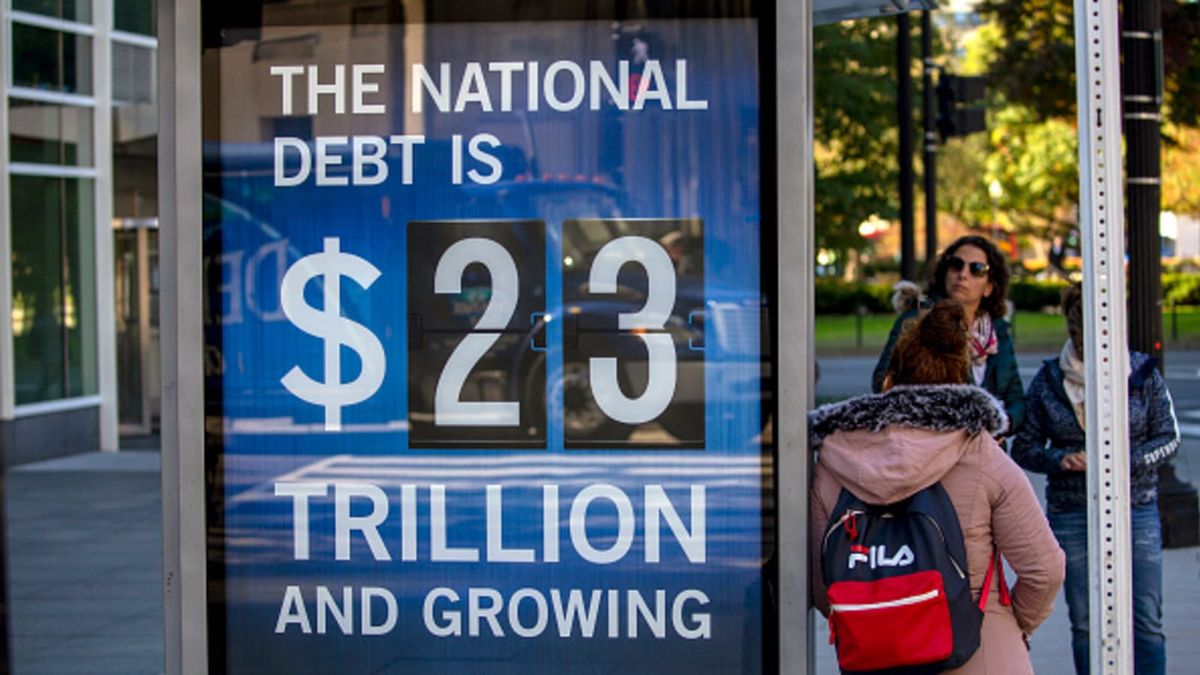US deficit hits an all-time high with coronavirus spending

A few minutes every morning is all you need.
Stay up to date on the world's Headlines and Human Stories. It's fun, it's factual, it's fluff-free.
The budget deficit in the United States has hit a record US$2.81 trillion amid wider fallout over the coronavirus pandemic and continuing debate over the next round of economic stimulus.
While the deficit has increased most recently due to measures intended to soften the blow of COVID-19 on businesses and consumers, it continues a yearslong of growing government spending. With further economic stimulus likely still to come, it doesn’t appear that spending will fall by any significant amount in the near future.
Yet, experts remain divided over the meanings of these figures, with public and political interest more focused on resolving the issues brought about by the coronavirus in the present, rather than on the budget deficit.
Deficit explosion
The economic circumstances caused by the coronavirus pandemic are without precedent in recent times.
The US government has taken on massive budget deficits due to spending significantly more than it is bringing in.
A steep drop in tax revenue due to less consumer activity during the height of the pandemic as well as massive amounts of government spending on stimulus to aid workers, the unemployed and small businesses have all meant that government spending has far outstripped government revenue.
With the US budget deficit now at US$2.81 trillion for the first 10 months of the budget year (which began in October 2019), the explosion of spending and the drop off in revenue as a result of the coronavirus has only continued.
At a total of some US$864 billion, the federal budget deficit for the month of June was record breaking on its own. That number eclipsed the previous record of US$738 billion, which had been set just two months prior – in April.
Rescue packages as a result of the coronavirus already total around US$3 trillion, but with the US$600 unemployment stimulus payments having expired at the end of July and a new package reportedly in the works, the deficit could soon see billions if not trillions more added.
Debate in Congress over the next round of stimulus has so far been unproductive. A bill was passed in the Democratic-controlled House that called for an extension of existing stimulus packages, essentially spending another US$3 trillion on aid for the economy. Republicans meanwhile are aiming for a reduced package closer to US$1 trillion, which would cut unemployment benefits by over 60% and reduce aid spending overall.
Regardless of which bill is ultimately passed, the US budget deficit won’t be dropping anytime soon, as the economic fallout from the coronavirus and the protections needed for workers, struggling businesses and even state governments will require significant aid from the federal government.
Public disinterest
Despite the record-breaking figures, however, public and political interest in the budget deficit has declined, not grown.
A Pew Research Center survey conducted in June found that 47% of US adults believed the deficit to be “a very big problem,” down from 55% in the fall of 2018. This despite the fact that the deficit itself grew from US$779.1 billion at the end of the 2018 fiscal year to US$2.8 trillion at the end of July 2020.
The survey also found that a greater share of the American public finds the pandemic (58%) and ethics in government (63%) to be issues of greater concern than the budget deficit. For the time being, the pandemic is making massive spending acceptable to many.
In the political sphere, the deficit has received scant attention and 2020 may yet be dwarfed by the spending in coming years.
The campaign of presumptive Democratic presidential nominee Joe Biden has promised hundreds of billions in spending across various areas of the economy, unconnected to the coronavirus recovery. This includes US$400 billion to increase purchases of American-made products, billions for health care reform and a US$2 trillion investment in Biden’s “Clean Energy Revolution,” which will turn the focus on creating new jobs through the transition from fossil fuels to clean energy sources.
Likewise, if President Donald Trump is reelected in November, it is unlikely he would do anything to break drastically with the high levels of spending his presidency has authorized so far.
Despite promising during the 2016 presidential campaign to eradicate the nation’s debt in eight years, at the current rate, Trump’s budgets will have increased US debt by US$8.3 trillion, to US$28.5 trillion, at the end of eight years. This increase was fueled in large part by a massive tax cut that has resulted in a steep drop in government revenue.
By the end of 2019, the Trump administration had managed to nearly double the US$585 billion deficit it inherited from the Obama administration and the amount is expected to reach a sum total of US$3.7 trillion by the end of the 2020 fiscal year as a result of the huge amounts spent on the coronavirus recovery.
Ultimately, the public and political disinterest in the budget deficit may be due to the deficit’s seemingly never-ending nature. The US has run federal deficits for 60 years, aside from a brief interlude between 1998 and 2001. The warnings of deficit hawks have not come true either, as the increased deficit has not resulted in exploding debt, inflation or rising interest payments.
As with many aspects of the coronavirus pandemic and as one recent opinion piece in The New York Times has argued, trillion-dollar deficits may be part of the “new normal,” at least until the country has completely recovered from the pandemic and its fallout.
Have a tip or story? Get in touch with our reporters at tips@themilsource.com




Comments ()